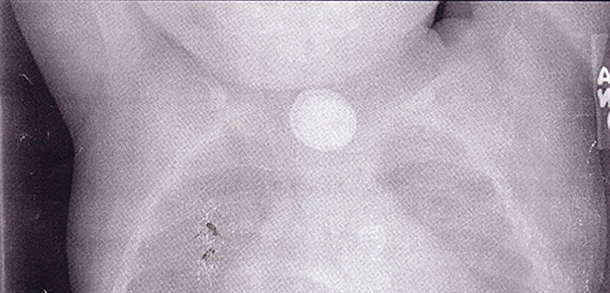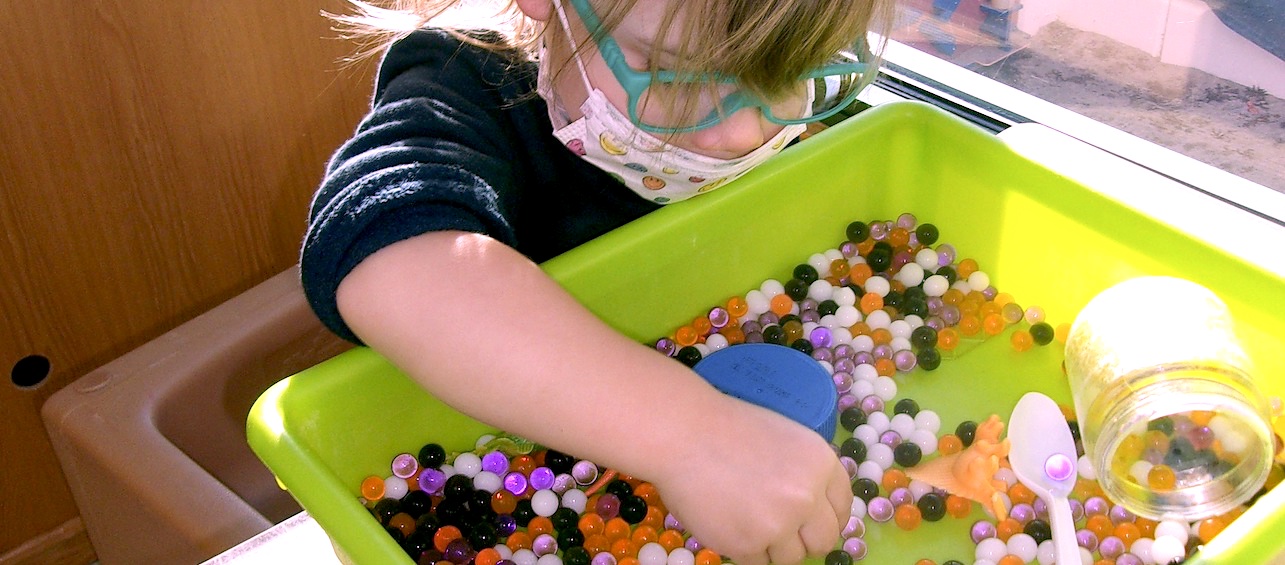The holidays mean something a little bit different for everyone. For me, it’s the time of year in which I step up my button battery awareness efforts into high gear.
My youngest son, Emmett, swallowed a button battery eight years ago and has suffered serious injuries to his airway and lungs as a result. The damage to Emmett’s esophagus and airway led to 68 surgical procedures and therapies. He’s on the upswing now but we have traveled a long road to get here. You can read more about Emmett’s experience on a previous blog post: Life After Swallowing a Button Battery.
The Dangers of Button Batteries
As we learned the hard way, button batteries aren’t just a swallowing hazard for young children. They can get lodged in the esophagus or intestine, slowly leaking alkaline electrolytes and causing internal chemical burns. The National Capital Poison Center states that more than 3,500 people swallow button batteries every year.
I increase outreach efforts this time of year because button batteries are in so many seasonal toys, greeting cards and ornaments. And so much more education is needed on how dangerous those seemingly innocuous little batteries are, regardless of size. The potential for damage is greater the larger it is, because it’s more likely to get stuck.
In Arizona where we live, I like to draw a parallel to swimming pools. Not everyone has a swimming pool. But everyone is aware of the potential for drowning and the extra safety measures needed to keep kids safe. Similarly, everyone has button batteries in their home but not everyone is aware of what household items they’re in.
Items Containing Button Batteries
Right now I’m most concerned about all of the trinkets we get for the holidays. Things like blinking toys, headbands, tea lights, ornaments and greeting cards. Many of these items have a button battery in them without a screw to secure it in the device. Please don’t take any chances – get them out of your house! It will only take a moment for your baby or toddler to put it in his mouth.
Then there are the everyday items in your house like remotes, thermometers, hearing aids, remote-entry keys, calculators, scales, toys and games.
I’ve also noticed a trend with kids’ crafts. Schools, camps, and libraries are making crafts with button batteries, to help them understand how circuits work. Often, the button batteries are only secured by a piece of tape. Please inspect all of the crafts coming into your home!
Steps to Prevent Young Kids From Swallowing Them
I realize it is impossible to get rid of all of these items in your house, but there are additional steps you can take to protect your young children from swallowing them:
- Identify the items that are in your house and keep them out of your child’s reach.
- Lock up loose or spare batteries.
- If the button battery is in something that you use and move every day, like a remote, duct tape it. This is not a perfect solution but it will make it more difficult for a young child to get it out.
We have a lot more work to do to spread awareness. 3,500 injuries a year is 3,500 too many. Please join me in this effort by sharing this post and spreading awareness about the dangers. With a little extra precaution, injuries from button batteries can be prevented.
If you have any questions about the dangers of button batteries, please call your Poison Control Center at 1-800-222-1222.






My 7 year old daughter Ruby also swallowed a button battery. In her case it was inside a soft rubber finger ring that had an internal flashing light. After the event she explained that she had bitten through the rubber and then realised that the battery ‘fizzed’ on her tongue. At one point she accidentally swallowed. To begin with I wasn’t even sure what to do. I’d never heard of anyone swallowing a battery so I googled for advice. Everything said to get her to a hospital as soon as possible. That’s when I realised we possibly had a serious problem. What followed was something I couldn’t ever have imagined. She was x-rayed and sure enough in her stomach was the battery. At this point the Doctor explained why it was a serious issue and what could happen if the battery leaked. I was advised to take her home and keep a close eye on her in the next 48 hours to ensure that the battery had naturally passed out. If it didn’t then they were already talking about possible surgery. For the next two days I had to check through every bowel movement she passed. I missed only one, she forgot and flushed the toilet after the first one following the battery being swallowed. After the 48 hours there was no sign so back we went for another x-ray. It was then finally that I found out it had gone and although I hadn’t found it she must have passed it safely that first toilet trip. THis might sound like a story from a parents hell hand book but it happened to us and with a child that is old enough to have passed the stage of putting everything into their mouths. I simply didn’t see it coming and until it did hadn’t really given much thought to how dangerous, apart from a choking hazard, one small round button could be. I cannot stress strongly enough that we need to be more aware and pass that awareness to other parents, grandparents, aunts, uncles and other family members, of the dangers that can arise from such a small and supposedly harmless object for ANY child. No parent should have to sit and listen to a Doctor explain the harm these batteries can and do, do. I thank god that she suffered no more than a very uncomfortable and scary few hours when other children are harmed seriously by something we can guard against. Please, when giving anything that might contain these batteries, please be aware of what they contain and what household you are sending them too. Be aware and be safe!